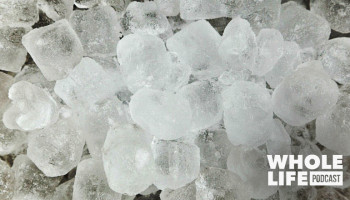Subscribe to the WLC Podcast on iTunes
(click here for the complete transcript)
What I knew about recovering from an injury, and what I taught my clients, was wrong. That’s what I thought when I read Gary Reinl’s book ICED! The book explains that the “R” for rest and the “I” for ice in the RICE method of recovering from injuries is completely backward.
In fact, resting and icing an injury can delay healing. There is “literally no clinical evidence whatsoever that ice would be a useful modality,” Reinl told me when I interviewed him. In fact, icing prevents inflammation, and a person’s body cannot heal without inflammation. Reinl isn’t some quack who has simply decided to take the contrarian position. He cites dozens of other studies and experts, including the founder of RICE himself:
“Almost forty years ago, I coined the term RICE (Rest, Ice, Compression, and Elevation) as the treatment for acute sports injuries,” says Gabe Mirkin, author of the 1978 book The Sportsmedicine Book. “Subsequent research shows that Rest and Ice can actually delay recovery. … So today, RICE is not the preferred treatment for an acute athlete injury.”
And icing isn’t the only thing that prevents healing: So does stillness (also known as “resting,” or the “R” in RICE). The best way to heal an injury? Listen to what the tough old Marine dads tell their children, and walk it off!
- Cited by Reinl from the Journal of Applied Physiology: “Although initially thought to improve an individual’s ability to heal, mechanical unloading [stillness] promoted by extended periods of bed rest has emerged as a contributing factor to delayed or aberrant tissue repair.”
- Cited from the Journal of the American Academy of Orthopedic Surgeons: “One of the most important concepts in orthopedics in this century is the understanding that loading [active recovery] accelerates healing of bone, fibrous tissue, and skeletal muscle. … For these reasons, patients with musculoskeletal injuries and those who have recently undergone surgery are now being treated with controlled physical activity that loads their healing tissues. Evaluation of new approaches to the promotion of healing of bone, fibrous tissue, and muscle should include consideration of the effects of loading on tissue repair and remodeling.”






